Exciting New Releases: ZD Toys Collection
Exciting New Releases: ZD Toys Collection
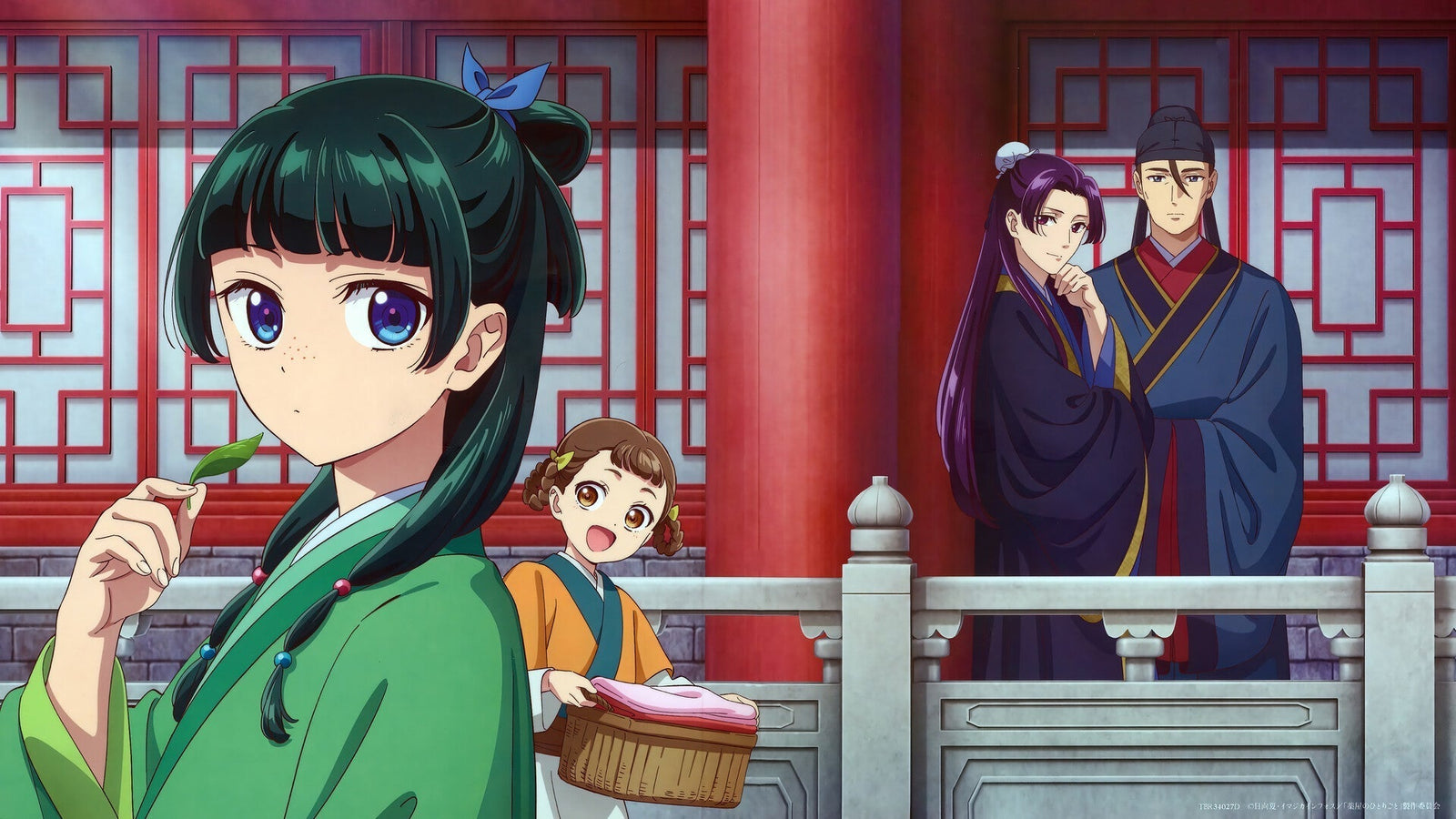
The Future of Anime Films: How Modern Series Redefine Storytelling
November 12, 2025 18 min read
This anime has carved its name into history — a cultural eruption that refuses to fade. After the record-shattering triumph of Demon Slayer: Infinity Castle, which blazed through 2025’s box office like wildfire, the world now watches as it races toward a monumental milestone — potentially becoming the first billion-dollar anime film once it releases in China on November 14.
What once began as a niche art form has now evolved into a global cinematic force, one capable of outpacing even Hollywood’s biggest blockbusters. The message is clear: anime is no longer the underdog — it’s the new heartbeat of modern storytelling.
Audiences today are starved for authenticity and innovation — for stories that bleed emotion, worlds that defy imagination, and visuals that push the boundaries of what cinema can be. Anime, with its infinite canvas of creativity, delivers all that and more. With breathtaking animation and deeply human storytelling, films like Infinity Castle and the upcoming Chainsaw Man: Reze Arc aren’t just competing with live-action cinema — they’re redefining it.
And if this trajectory continues, the future belongs not to reboots or franchises, but to the raw, unfiltered brilliance of anime, where emotion meets artistry, and every frame carries the weight of a revolution.
Here are some of the anime we think would dominate the theatres:
Kaiju No. 8

Kaiju No. 8 is not just another monster-fighting anime — it’s a story about what becomes of dreams when adulthood dulls their shine, and what happens when the fire reignites in the unlikeliest of ways.
Kafka Hibino once dreamed of standing shoulder to shoulder with his childhood friend, Mina Ashiro, battling colossal kaiju to protect humanity. But life — in all its quiet disappointments — had other plans. Years later, he finds himself on the cleanup crew, scrubbing the aftermath of the very battles he once longed to fight. Among the twisted remains of fallen beasts, Kafka has grown familiar with decay — until one day, fate lets him taste transformation instead of routine.
When a strange organism fuses with his body, Kafka becomes the very thing he once feared — a kaiju. But instead of losing himself, he finds purpose. His monstrous form becomes both curse and calling, a paradox that grants him entry into the Defense Force and reignites the spark of who he was meant to be. Beneath the rubble and roar, Kaiju No. 8 is about reclaiming your life’s rhythm when the world has convinced you it’s too late to start over.
Its brilliance lies in balance — blistering action framed by introspection, humor colliding with heartbreak, and a protagonist whose age brings depth to a genre often dominated by youth. The animation itself feels alive — cinematic, visceral, almost breathing — each kaiju clash rendered with bone-shaking energy and emotional gravity.
In theaters, Kaiju No. 8 won’t just be watched — it’ll be felt. It’s the kind of story that surges through your chest like a battle cry for every dreamer who ever got lost in the grind. A reminder that even in a world of monsters, the fiercest struggle is often the one within — and sometimes, becoming the thing you fear most is the only way to rediscover your humanity.
Jujutsu Kaisen
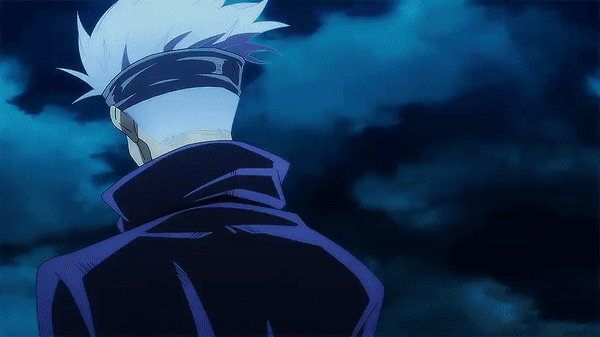
Jujutsu Kaisen is a story pulsing with human fragility, raw chaos, and the beauty of defiance in a world steeped in darkness. At its core stands Yuji Itadori, a boy who never sought greatness, only meaning. His life spirals the moment he swallows a cursed object — one of Ryomen Sukuna’s malevolent fingers — binding his soul to the King of Curses himself. From that instant, Yuji’s existence becomes a tightrope walk between life and damnation.
Drawn into the eerie halls of Tokyo Jujutsu High, Yuji trains beside the headstrong Nobara Kugisaki and the stoic Megumi Fushiguro, under the watchful gaze of Satoru Gojo — the enigmatic sorcerer whose limitless power conceals a haunting understanding of human weakness. Together, they face curses that aren’t just monsters — they’re manifestations of fear, grief, and rage, born from the darkest corners of the human heart.
What makes Jujutsu Kaisen transcend its genre is its emotional rhythm — the seamless blend of bone-shattering combat and quiet vulnerability. Every fight feels alive, not just through kinetic animation or razor-sharp choreography, but through the emotional stakes woven into every strike. When fists meet curses, it’s more than exorcism — it’s catharsis.
On the big screen, Jujutsu Kaisen becomes pure sensory overload — a visual storm of cursed energy, sorrow, and resolve. Its intricate power system — a dance of emotion, technique, and self-awareness — amplifies its impact, pulling audiences deep into a world where strength is never just physical. It’s willpower made visible, pain turned into art.
This is a story that doesn’t just ask what it means to fight evil — it questions what it means to remain human in the process. Whether it’s Yuji’s compassion, Gojo’s godlike detachment, or Nobara’s fearless individuality, every character embodies the struggle between control and chaos.
Dandadan

Dandadan is what happens when the supernatural collides head-on with the ridiculous — a kaleidoscopic fever dream where love, fear, and cosmic chaos spin in the same orbit. The 2024 key visual from Science SARU captures it perfectly: Momo Ayase and “Okarun” Ken Takakura sprinting from a creature with burning yellow-red eyes, caught between terror and exhilaration — the precise emotional wavelength that defines this anime.
At its heart, Dandadan begins with disbelief — Momo, who rejects the idea of aliens, and Okarun, who laughs off ghosts. Two teenagers, each certain the other is foolish, only to discover that they’re both spectacularly wrong. What follows isn’t just a collision of worlds — it’s an explosion of everything anime can be: sci-fi, horror, comedy, and heartache, all bound together by a shared pulse of pure chaos.
As the two navigate an onslaught of spirits, aliens, curses, and psychic phenomena, they find something rarer than any paranormal entity — connection. Their partnership evolves from skepticism to kinship, from laughter to loyalty, proving that sometimes the strangest worlds bring out the truest bonds. Beneath the absurdity and action, Dandadan is a story about believing in each other when the universe stops making sense.
Science SARU’s adaptation transforms every frame into electricity. The animation is alive — kinetic, elastic, and untamed — moving with the rhythm of a fever dream. Every fight feels like a visual fireworks show set to an emotional soundtrack. The direction doesn’t just animate chaos; it orchestrates it, crafting a symphony of humor, horror, and heart that never loses its emotional core.
In theaters, Dandadan could be a revelation — a genre-bending spectacle that thrives on unpredictability. Like Chainsaw Man: Reze Arc, it’s tailor-made for the big screen: bold, bizarre, and bursting with life. But what sets it apart is its humanity. Momo and Okarun’s chemistry anchors the madness, reminding us that even in the face of interdimensional absurdity, it’s human emotion that gives the story its gravity.
Dandadan is a declaration of creative freedom. It’s anime unshackled, sprinting wild and fearless through the boundaries of logic, daring its audience to keep up. And as fans worldwide have discovered, that’s exactly what makes it unforgettable.
Solo Leveling
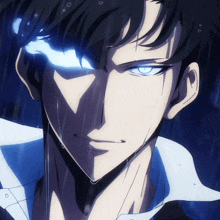
Solo Leveling is the story of a man reborn in darkness — a symphony of struggle, rage, and evolution that transforms despair into dominance. The key visual of Sung Jinwoo, eyes burning with fury as his shadow powers surge around him, captures everything this series stands for: pain weaponized into power.
Set in a world where mysterious gates open to dungeons filled with monsters, Solo Leveling follows a society built around hunters, warriors who risk their lives to protect humanity from the horrors within. Among them stands Jinwoo — not the strongest, not the bravest, but the weakest. Mocked, pitied, and barely scraping through raids just to provide for his family, his existence is a quiet tragedy wrapped in selflessness. Yet, beneath his frail exterior lies a heart that refuses to break.
Everything changes inside a double dungeon, a death trap masquerading as a mission. Half his team perishes, the rest flee — and Jinwoo, broken and bleeding, faces annihilation. But in the moment between life and death, the universe itself seems to take notice. The System chooses him — turning his suffering into a game of survival, his mortality into a challenge. For the first time, Jinwoo is no longer the weakest. He becomes something far more dangerous — a man who can level up without limits.
What follows is one of the most visceral power ascensions ever told in anime. Each level he gains isn’t just a numerical boost — it’s a resurrection. Every fight, every scar, every shadow summoned from the corpses of his enemies reflects a man clawing his way back from the abyss. The transformation from prey to predator, from human to something mythic, becomes both terrifying and beautiful.
Solo Leveling thrives because it captures the psychology of strength. It’s not about the thrill of combat — it’s about the weight of survival, the cost of power, and the isolation that comes with surpassing everyone you once admired. As Jinwoo’s shadows grow, so does his solitude. Power, after all, is a double-edged sword — and Solo Leveling wields it with haunting precision.
Now, with an official movie in production, anticipation is at an all-time high. Many fans believe it could rival, or even surpass, the box-office dominance of Demon Slayer: Infinity Castle. While its domestic debut was modest, its global rise has been meteoric — a phenomenon that turned an underdog story into a worldwide legend.
In a landscape saturated with heroes who start strong, Solo Leveling dares to ask — what if greatness was born from weakness? What if the most broken soul could rewrite his fate and stand alone at the top?
Mob Psycho 100

Mob Psycho 100 is a masterpiece wrapped in absurdity — a story that hides profound humanity beneath its explosions of color and chaos. The cover art says it all: Shigeo “Mob” Kageyama, the quiet boy with an ocean of psychic power buried beneath a still surface, and Reigen Arataka, his eccentric, smooth-talking mentor, standing together as if balancing the extraordinary with the ordinary.
On the surface, Mob Psycho 100 is about spirits, curses, and psychic brawls that twist reality itself. But peel back the spectacle, and it becomes something deeper — a meditation on identity, emotion, and self-worth. Mob, a middle schooler who could easily obliterate cities, doesn’t want to rule or destroy; he just wants to fit in, to feel seen without being feared. His power doesn’t define him — his restraint does.
And that’s where the show’s brilliance lives — in contrast. Mob’s inner calm against his chaotic power. Reigen’s shameless deceit against his strange, genuine wisdom. The surreal world of psychic warfare against the fragile reality of adolescence. Together, these opposites form something extraordinary — a coming-of-age story told through psychic tremors and emotional earthquakes.
Each episode dances between comedy and catharsis, where the absurd becomes profound and laughter turns into reflection. When Mob’s emotions reach 100%, it’s not just an explosion of psychic energy — it’s a metaphor for what it means to finally let yourself feel. His battles are less about defeating enemies and more about confronting the parts of himself he’s afraid to acknowledge: anger, sadness, love, and the desperate need for belonging.
Studio BONES’ animation style — jagged, expressive, and wildly dynamic — may seem unpolished at first glance, but it’s anything but careless. It’s alive, bending reality to the rhythm of emotion. Every frame is drawn with intention, every fight choreographed not for spectacle, but for emotional truth. It’s raw art disguised as chaos.
A feature film adaptation of Mob Psycho 100 would be nothing short of transformative. On the big screen, Mob’s psychic surges could become visual symphonies, and his internal turmoil could resonate even louder — a cinematic portrayal of what it means to be human in a world that mistakes power for purpose.
Because at its heart, Mob Psycho 100 isn’t about psychic powers at all — it’s about emotional honesty. It’s about learning that strength isn’t measured in destruction, but in compassion. It’s about growing up, breaking down, and building yourself again, one tremor at a time.
And that’s what makes Mob Psycho 100 one of the most quietly powerful anime ever created — a story that doesn’t just move, it awakens.
Frieren: Beyond Journey’s End

Frieren: Beyond Journey’s End is not a story where most tales end with the slaying of a Demon King and the triumph of heroes; Frieren begins in the silence that follows. The battle is over. The world is saved. And time — that quiet, merciless force — begins to move again.
At the center of it stands Frieren, an elven mage whose agelessness once seemed like a gift. For a decade, she traveled beside the human hero Himmel, the priest Heiter, and the warrior Eisen, their names etched into legend. But while her companions aged, loved, and laughed with mortal urgency, Frieren — untouched by time — saw their years as fleeting moments. Only when Himmel’s life reaches its inevitable end does she begin to understand the weight of what she’s lost.
What follows is not a new quest to save the world, but a journey inward — a pilgrimage through memory, regret, and rediscovery. As Frieren sets out once more, joined by her apprentice Fern and the earnest warrior Stark, she moves through a world both familiar and foreign. Every village, every spell, every fleeting sunset becomes a quiet reminder: mortality gives meaning to time.
Frieren: Beyond Journey’s End is a fantasy stripped of spectacle and noise — it’s soft, deliberate, almost meditative. Where other stories shout about destiny, Frieren whispers about remembrance. Its magic is not in explosions of power, but in the tender way it captures impermanence — the subtle ache of outliving those you love, and the slow beauty of learning to feel again.
Visually, it’s breathtaking. The animation flows like a watercolor dream — still and spacious when the world stands still, radiant and alive when emotion swells. The score, haunting and ethereal, becomes its own kind of magic: a quiet hymn for lost time. Each scene breathes with the rhythm of nostalgia, inviting viewers not to rush, but to sit in the silence between moments.
A theatrical adaptation would elevate this masterpiece even further. The wide screen could stretch the endless skies Frieren walks beneath, the orchestral echoes of its soundtrack filling the space with reverence. It would invite audiences to slow down — to feel, to remember, to grieve, and to cherish.
Because Frieren: Beyond Journey’s End isn’t just a fantasy — it’s a meditation on time, love, and memory. It reminds us that even immortality can be lonely if one forgets to live, and that true connection is not measured in years, but in the moments we hold close.
The Apothecary Diaries

This anime is a rare kind of storytelling — quiet in tone yet razor-sharp in intellect, delicate in beauty yet brimming with danger beneath its surface. The key visual of Maomao, her expression calm and unreadable as bubbles shimmer around her, captures the essence of the series: an elegant mystery wrapped in silk and secrets.
Set within the labyrinthine world of the imperial palace, The Apothecary Diaries follows Maomao, a young woman whose mind is as keen as the poisons she studies. Sold into servitude, she hides her brilliance behind humility — until curiosity and fate pull her into the tangled web of palace politics. With her deep knowledge of medicine, chemistry, and human behavior, she becomes both healer and detective, unraveling illnesses and intrigues that others dare not question.
But this is no ordinary mystery tale. Beneath the layers of historical elegance lies a narrative about intelligence surviving in silence. Maomao is not a hero born of combat or privilege; she is a woman navigating a gilded cage with her wit as her only weapon. Her brilliance doesn’t scream — it whispers, cutting through deception with precision and grace. And in her, we see a rare kind of power — not the power to dominate, but the power to understand, to observe, to see truth in the spaces between words.
Opposite her stands Jinshi, the beautiful and enigmatic head eunuch whose charm conceals a thousand secrets of his own. Their dynamic is a slow-burn dance of intellect and restraint — a relationship built not on impulse, but on intrigue. Between them, The Apothecary Diaries crafts a tension both cerebral and emotional, a study of connection born not from romance alone, but from recognition — two minds circling each other in a world that demands masks.
Visually, the series is a marvel — its worldbuilding rich with texture and detail, its palace corridors painted with an artist’s patience. Every scene feels steeped in atmosphere — perfumed air, rustling silks, the shimmer of tea light over porcelain. Yet behind the elegance lies a lurking danger: secrets that kill as swiftly as poison.
A cinematic adaptation would elevate all of this into something spellbinding — a historical thriller that feels both intimate and grand. The vast halls of the Rear Palace could come alive in sweeping frames, while Maomao’s quiet deductions and Jinshi’s veiled emotions could unfold with operatic weight. The stillness, the tension, the soft click of logic snapping into place — all of it would thrive under the glow of the big screen.
Because The Apothecary Diaries isn’t just a mystery — it’s a portrait of intellect in a world built to silence it. It’s about finding agency in servitude, beauty in restraint, and truth in the smallest details. Maomao doesn’t fight her world — she outsmarts it, one secret at a time.
It doesn’t shout for attention. It lures you in — slow, deliberate, intoxicating — until you realize you’re caught in the same web of fascination that surrounds Maomao herself.
To Be Hero X
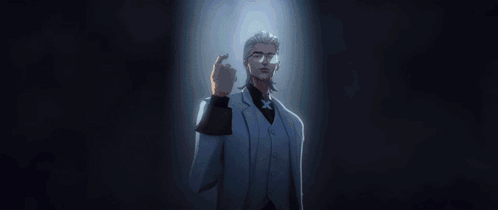
To Be Hero X is a dazzling, unflinching reflection of modern heroism — a world where strength isn’t born from tragedy or destiny, but from trust itself. In this society, heroes don’t just save lives; they live and die by public approval, their power quantified by glowing Trust Values that pulse like moral heartbeats on their wrists. It’s fame as fuel, morality as a performance — and every act of heroism is a gamble in the spotlight.
The story unfolds in anthology-style fragments, focusing on the top ten heroes — each a mirror of society’s shifting ideals. Some are noble, others broken. Some crave validation; others reject it. And through their overlapping stories, To Be Hero X dismantles the myth of purity in heroism, exposing the fragile line between altruism and ego. Every fight, every rescue, every media appearance feeds into an invisible algorithm of belief — a world where power itself is social currency.
At the center lies the tournament — a biannual spectacle where the greatest heroes battle not just for supremacy, but for recognition, for relevance, for the elusive title of “X”, the strongest. It’s a crown forged from reputation and blood, a title that means everything and nothing at once. Beneath the roar of the crowds and the flash of powers, there’s a quiet desperation — a truth that even heroes must perform to survive.
Visually, To Be Hero X is a revolution in itself. Its fusion of 2D and 3D animation doesn’t just dazzle — it reinforces its themes. The seamless blend between the two reflects the collision between authenticity and artifice, the digital age of heroes living under constant surveillance. Its animation moves like electricity — hyper-stylized, pulsing with kinetic chaos, yet grounded in emotional precision.
The soundtrack only deepens the immersion — a sonic storm of synth, emotion, and cinematic tension that lingers long after the screen fades to black. Each episode feels like a short film, each hero’s arc a chapter in a grand allegory about identity and perception.
A theatrical adaptation would take To Be Hero X beyond its cult acclaim and into cultural phenomenon. On the big screen, the tournament could unfold as a sensory overload — explosions of power rendered with cinematic scale, introspective moments framed with haunting stillness. The film could magnify what the series does best: forcing viewers to question the cost of admiration and the price of belief.
Because beneath the adrenaline and spectacle, To Be Hero X is not about heroes at all — it’s about human beings trapped inside the myth of heroism. It’s about what happens when strength becomes performance, and truth becomes just another form of branding.
To Be Hero X is one of the most fascinating modern anime: It holds up a mirror to our obsession with reputation, asking the question few dare to confront — what is a hero without an audience?
Link Click
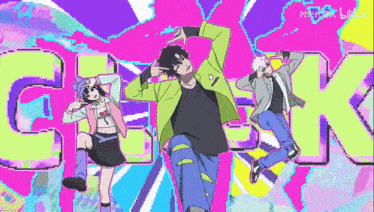
Link Click is a haunting, beautiful meditation on memory, consequence, and connection. It’s a story that asks not just what if you could step into the past, but what would it cost you to change it?
At its center are Cheng Xiaoshi and Lu Guang, two young men bound by friendship, guilt, and an impossible gift. Through a single photograph, Cheng Xiaoshi can enter the frozen moments of the past, inhabiting the body of the photographer, while Lu Guang — the calm to Cheng’s storm — guides him from the present, reading time’s fragile threads like a strategist of fate. Together, they navigate the boundaries between empathy and interference, walking the razor’s edge of cause and effect.
But Link Click is not merely a mystery — it’s a study of human emotion trapped between seconds. Each photograph becomes a doorway into heartbreak, regret, and fleeting joy — slices of life that reveal how fragile every choice can be. The duo’s work in the “Time Photo Studio” begins as a service — small requests to revisit a moment, a truth, a lost memory. Yet, as their missions spiral deeper, they find themselves entangled in timelines that bleed into their own, where saving one life may unravel another.
What makes Link Click so arresting is its emotional honesty. Every episode is charged with an undercurrent of melancholy — a tension that hums quietly beneath the supernatural premise. It’s not the grandeur of time travel that grips the audience, but the intimate ache of hindsight, the quiet devastation of realizing that even the best intentions can’t always rewrite destiny.
Visually, it’s a masterpiece of restraint and rhythm. The animation, with its sharp framing and noir-inspired palette, turns every shot into a photograph in motion — cinematography disguised as animation. Time slows, angles tighten, and every flicker of expression carries meaning. The action sequences hit with visceral weight, but it’s the stillness between them — the silence, the long looks, the flicker of recognition — that truly lingers.
On the big screen, Link Click could transcend its format entirely. Its cinematic DNA already pulses through every frame, its tension and visual poetry perfectly suited for a feature-length adaptation. Imagine those transitions between the present and the past blown up across the screen — sound dissolving into memory, color bleeding into emotion, the line between moments shattering like glass.
Because Link Click isn’t just about time travel — it’s about the emotional gravity of remembering. It’s about how we carry the past, how photographs become both comfort and curse, and how every moment we try to fix reminds us that we were once powerless to change it.
In its quietest moments, Link Click becomes something universal — a reflection of grief, love, and the human need to hold on to time that never holds still. It’s the ache of watching light fade from a photograph and realizing the memory still burns inside you.
Lord of Mysteries

It is the kind of story that doesn’t just pull you into another world — it reconstructs your reality. It’s a descent into a universe of fog and faith, science and sorcery, where every whisper hides a secret and every shadow watches back. The tale begins with Zhou Mingrui, an ordinary man from the modern world, who awakens as Klein Moretti in a steampunk-inspired city — a place where brass machinery hums beside candlelight, and the laws of the arcane intertwine with logic and deceit.
Here, mystery isn’t just a genre — it’s a way of existence. Seeking the cause of his transmigration, Klein navigates this uncanny world of occult orders, hidden deities, and forbidden rituals, eventually becoming a Beyonder — a being whose powers are awakened by consuming mystical potions that bend the human body and mind beyond comprehension. Yet with every new ability, Klein edges closer to madness, his consciousness dancing on the fragile line between enlightenment and oblivion.
Lord of Mysteries thrives on atmosphere. The world it builds is one of Victorian splendor laced with paranoia — gaslit streets cloaked in mist, churches that whisper prayers to unknowable gods, and secret organizations weaving invisible wars beneath the fabric of society. It’s as if Sherlock Holmes met H.P. Lovecraft in a clockwork cathedral, and the result was a story both majestic and terrifying.
The animation brings this atmosphere to life in staggering detail. The architecture gleams with industrial grandeur, while the supernatural sequences ripple with dread and awe — gears and sigils turning in perfect, ominous harmony. Every motion feels deliberate, every color a spell. You don’t just watch Lord of Mysteries; you inhabit it.
Klein Moretti himself is a study in duality — the skeptic forced to believe, the rational mind ensnared by the irrational. His evolution isn’t a hero’s ascent but a psychological descent — an unraveling into the hidden layers of existence. Each revelation feels earned and heavy, stitched together with dread, intellect, and the slow decay of certainty. The narrative doesn’t hand you answers; it invites you to question everything — your faith, your sanity, your very perception of what’s real.
A theatrical adaptation would magnify all of this tenfold. The grand scale of Lord of Mysteries — its cathedrals of brass and blood, its secret séances, its haunting score — demands the canvas of a cinema screen. The dark halls of theaters would become extensions of its universe, swallowing the audience whole in its symphony of shadows and wonder.
And when the lights fade and Klein Moretti’s gaze meets yours from across the veil of worlds, you understand — this isn’t a story about magic or gods or madness. It’s about what it means to seek meaning in a world that was never meant to be understood.
From the explosive emotional power of Jujutsu Kaisen to the meditative grace of Frieren: Beyond Journey’s End, from the thunderous chaos of Solo Leveling to the quiet cunning of The Apothecary Diaries, modern anime is rewriting the language of storytelling itself. Each of these worlds — vibrant, violent, or tender — reflects something deeply human: our hunger for meaning, our struggle for control, our yearning to connect.
These aren’t just stories anymore — they’re cinematic revolutions, breaking free from the boundaries of television screens to command the grandeur of the silver screen. As anime continues to dominate global entertainment, each title stands as proof that emotion, artistry, and imagination are the new currency of cinema.
And for every fan who’s ever felt that electric pulse while watching their favorite series — this is your time to celebrate the worlds you love beyond the screen.
Explore your fandom like never before!
Discover the ultimate range of collectibles from Anime, Marvel, DC, Transformers, LEGO, and more — all waiting for true fans at Superhero Toystore!
Subscribe
Sign up to get the latest on sales, new releases and more …
